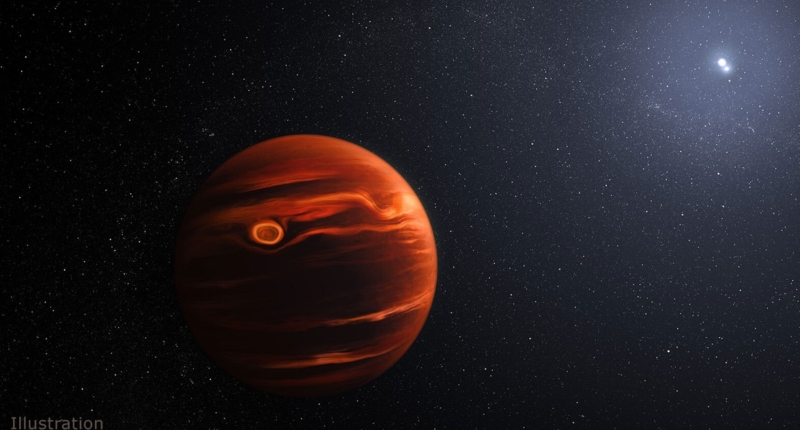NASA’s James Webb Space Telescope made groundbreaking observations of the atmosphere on a remote planet located 40 light-years away from Earth. The planet, VHS 1256 b, exhibited a dynamic cloud and weather system with multiple features. Unlike other telescopes that only identified one feature at a time, Webb identified all features at once with a lot of molecules detected in a single spectrum. The Early Release Science program allowed researchers to analyze the data collected by Webb’s instruments, with a promise of more discoveries in the future. The MIRI instrument on the telescope was developed through a partnership between NASA and ESA. George Rieke leads the MIRI science team for the US, while Gillian Wright leads for ESA. Alistair Glasse is the MIRI instrument scientist, and Michael Ressler is the US project scientist at JPL. The MIRI cryocooler development was led by JPL in collaboration with Northrop Grumman and NASA’s Goddard Space Flight Center.
NASA’s Webb Space Telescope Spots Dynamic Atmosphere on a Remote Planet
NASA’s James Webb Space Telescope has made remarkable observations of the dynamic atmosphere on a remote planet located 40 light-years away from Earth. The telescope revealed a swirling, gritty cloud system on the planet, known as VHS 1256 b, in just a few hours of observations.
While other telescopes have previously identified some of the features observed on this planet, they typically identified only one feature at a time. The Webb telescope, on the other hand, identified multiple features at once, according to co-author Andrew Skemer of the University of California, Santa Cruz. The telescope’s spectrographs, including the Near-Infrared Spectrograph (NIRSpec) and the Mid-Infrared Instrument (MIRI), detected a lot of molecules in a single spectrum that detailed the planet’s dynamic cloud and weather systems.
Unlike other planets that have been studied using the transit technique or coronagraph, the researchers were able to observe VHS 1256 b directly since it orbits at a great distance from its stars. The team analyzed the data collected by the telescope’s instruments and found a huge potential for additional discoveries in the coming months and years.
As VHS 1256 b is located far away from its stars, its skies may transition from cloudy to clear over time. However, there is still much to learn about the planet’s future. The team observed the planet as part of Webb’s Early Release Science program, which aims to transform the astronomical community’s ability to characterize planets and the disks where they form.
The research team’s paper, titled “The JWST Early Release Science Program for Direct Observations of Exoplanetary Systems II: A 1 to 20 Micron Spectrum of the Planetary-Mass Companion VHS 1256-1257 b,” will be published in The Astrophysical Journal Letters on March 22.
The James Webb Space Telescope is an international program led by NASA, in partnership with the ESA (European Space Agency) and CSA (Canadian Space Agency). It is the world’s premier space science observatory and will help solve mysteries in our solar system, study distant worlds around other stars, and explore the structures and origins of our universe.
NASA and ESA Partnership: Development of MIRI Instrument for Webb Telescope
The Mid-Infrared Instrument (MIRI) on the James Webb Space Telescope was developed through a 50-50 partnership between NASA and ESA. The US efforts for MIRI were led by NASA’s Jet Propulsion Laboratory, while a multinational consortium of European astronomical institutes contributed for ESA. George Rieke with the University of Arizona serves as the MIRI science team lead, while Gillian Wright is the MIRI European principal investigator. Alistair Glasse with UK ATC is the MIRI instrument scientist, and Michael Ressler is the U.S. project scientist at JPL. The MIRI cryocooler development was led and managed by JPL in collaboration with Northrop Grumman and NASA’s Goddard Space Flight Center. The California Institute of Technology (Caltech) manages JPL for NASA.
For more information about the Webb mission, visit: https://www.nasa.gov/webb
Don’t miss interesting posts on Famousbio










